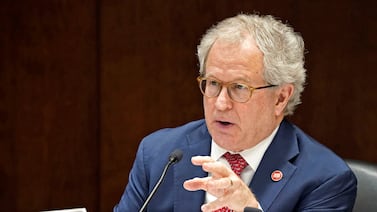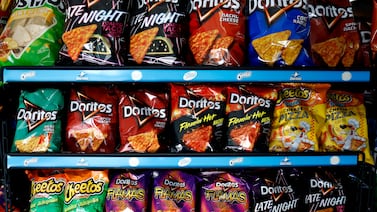Sign up for Chalkbeat Colorado’s free daily newsletter to get the latest reporting from us, plus curated news from other Colorado outlets, delivered to your inbox.
About a decade after schools in Colorado started using universal testing to identify students who are gifted, white students and those from higher socioeconomic backgrounds still make up the vast majority of students in gifted programs.
So educators are taking new steps to make sure students who have long been underrepresented in gifted programs across the country, including students of color, English language learners, and those from lower income families, are better represented.
Districts and organizations are now focusing on new data analysis, looking at multiple tests, and training teachers to identify behaviors that might signal high abilities among students of different cultures.
Some districts are closing gaps and are identifying more students, although statewide the gaps remain.
White students and those from higher socioeconomic backgrounds make up 50% and 54% of the population respectively, but white students make up more than 69% of students in gifted programs and those from higher economic backgrounds make up 80% of students in gifted programs in Colorado.
Statewide, Black students make up 4.6% of all public school students, but only 2.1% of students identified as gifted. Hispanic students make up 35.5% of all students, but only 16% of students identified as gifted.
By other measures, gaps are more significant. Students who qualify for subsidized meals, a measure of poverty, make up 45.7% of all students in the state, but only account for 19.9% of students who are identified as gifted. And students who are identified as multilingual learners, learning English as a new language, make up 13% of all students in the state, but only account for 2.3% of gifted students.
In the past, identification depended on a teacher or parent advocating for a child to be tested. Now, barriers include biases in tests themselves or in observations from educators, who are also still largely white. Staffing limitations in some districts also limit how much work gifted teams can do.
Closing the gap and identifying students matters, leaders say, because students need to be challenged and so educators can provide better resources. But also for self-knowledge.
Nisia Patalan, the gifted coordinator for the districts of the San Juan BOCES in southwest Colorado, said student identification matters in part so students can understand themselves better.
“Understanding who they are and how they see the world differently and then just being accepted,” Patalan said. “I just think about how isolating it is to be a gifted student. I think those kids aren’t getting what they need if they aren’t struggling if they aren’t struggling enough to get noticed. They’re masking because of their giftedness.”
Educators use data to find more students
Identifying students who are multilingual is a recent area of focus for many districts in the state. About five years ago, the Colorado Department of Education started creating guidance that now allows districts to use the scores of the ACCESS test — an English fluency exam that students identified as English learners already take every year — as a way to identify gifted students.
Students who gain proficiency in English much more rapidly than average can be flagged for identification.
Brad Russell, assistant director of teaching and learning and gifted and talented programming in Mapleton, participated in a group with the state to help create the guidance for districts to use that test.
So in his district, just north of Denver, where 80% of students are Hispanic and about 40% are English learners, leaders who were working with an outside partner on making sure teachers were teaching to grade level standards, also started to think about how few students were being identified as gifted.
Four years ago, just 2.5% of the district’s students were identified as gifted, so they set a goal to get to 5% within one year. Now, 8% of the district’s students are identified as gifted. Of those gifted students, 70% are Hispanic, which Russell said is close to the 80% of Hispanic students in the district.
To get there, every year, Russell creates a spreadsheet with every student and the scores for all tests they may take. He pulls out all the students who have scores in the 80th percentile and starts looking for trends over time. This means he looks for longer term patterns instead of how a student performs on one test at one point in time.
“Having that formal data review annually, that is step one for everyone,” but he added, “we want to make sure we’re going beyond that.”
Next, he reaches out to the student’s school teachers and has them use a formal rating scale to make observations about the student’s behavior. Sometimes families will also be asked to fill out an observation form about their child, and other student work might be used as well to create enough evidence to formally identify the student.
Traditionally, students were identified as gifted based on a high score on a cognitive ability test.
Those are the tests used for universal screening. In Mapleton, all second and sixth graders are tested. But if those tests don’t flag a student as gifted or if students somehow miss that test, Russell’s data review and other teacher observations can also be used to identify a student who is advanced.
Denver Public Schools started a similar data review last year.
In the first year of reviewing about five years worth of student scores on the ACCESS language test, Denver leaders identified more than 300 students who could be gifted based on their accelerated ability to learn a language.
About 26% of the district’s students are learning English as a new language, but only about 3% of gifted students were multilingual learners. After that first year of data review, it inched up to 4% of the approximately 6,900 identified gifted students. More students are in a group being evaluated and observed to possibly be identified within the next year or two.
“It’s really exciting, our gifted teachers are so thrilled about this,” said Meryl Faulkner, senior manager of gifted and talented for the Denver school district.
The district is in the process of reviewing data again this year.
DPS also piloted last year a new cognitive test, the NGAT, for its universal screening at some schools, which Faulkner believes made a difference in identifying more Black and multilingual students, she said.
This fall, all second graders in the district will take the new cognitive test.
And when teachers fill out observational ratings to identify students, Faulkner said, the district tries to have a teacher of the same cultural background as the student fill it out. “Cultural mismatches can occur, misunderstanding, or misinterpreting what their behaviors actually are,” she said.
Shalelia Dillard, founder of SCD Enrichment Program, a nonprofit organization trying to help schools diversify their gifted populations, is also in the process of getting a new teacher observation tool nationally recognized.
For example, she noted that “questioning authority is an across the board characteristic of many gifted students,” but stereotypes of black women being argumentative might allow an educator to think, “This is just a little black girl trying to have an attitude with me.”
Another example she likes to use for thinking about the different ways gifted abilities show up is when young students have to translate for adults.
“Students that had to read their parents bank statements at six years old and having to navigate that and translate that into respectful children language, it takes a high level cognitive profile,” Dillard said. “You’re using both hemispheres of your brain. That’s a huge one.”
State officials also pointed to San Juan BOCES as one area seeing positive improvements in closing gaps in who is identified as gifted. BOCES, which stands for boards of cooperative educational services, are groups of small districts that share resources.
Across the eight districts in the BOCES group, more than half of students qualify for free or reduced price lunches, a measure of poverty. In 2020-21, just 26.5% of gifted students did, but that number has jumped to 32% in 2023-24.
The BOCES districts with large populations of indigenous students have also seen improvements in their representation. For example, in the Mancos School District, 6.5% of enrolled students are identified at Native American, and among gifted students 6.7% are.
Many of the BOCES districts are using an alternative cognitive test, the same one DPS is moving to. And Patalan, the gifted coordinator, trains teachers every year, sharing different observational tools every month, including some geared specifically to look at how traditional behaviors might be expressed differently among different groups of students.
Among Native American students, for example, many of their traits are nonverbal, while an English learner who is trying to be expressive might use “inventive language” combining languages.
Districts want identification to be more than a label
Once students are in the process of being identified, teachers can start to differentiate how they help them in class. A teacher might purposefully pair two possibly gifted students together for assignments, for example.
And once they’re identified, state law requires students to have an advanced learning plan with goals specific to their gifted abilities which are reviewed every year.
In the handful of schools where Dillard’s organization works, she hosts a class with mostly students of color who might be gifted. Some students are already identified, and some are not. In the class, they receive college prep skills, advanced supplemental learning in core content areas, and talk about how being gifted might impact their social and emotional abilities.
“This is what it means to be gifted,” Dillard said. “It is a neurodiversity. With this particular neurodivergence, here’s how you can advocate for yourself, how you can connect with other students.”
Her program also hosts a weeklong summer program for students from across the metro area. The Mapleton district has also been hosting a summer program for students who are identified as gifted.
Last year, the online sign-up for Mapleton’s summer camp filled up in less than an hour. The district had planned for 90 students, and expanded to accommodate 122. Even more tried to enroll, leaders said, but had to be turned away.
Yesenia Robles is a reporter for Chalkbeat Colorado covering K-12 school districts and multilingual education. Contact Yesenia at yrobles@chalkbeat.org.





